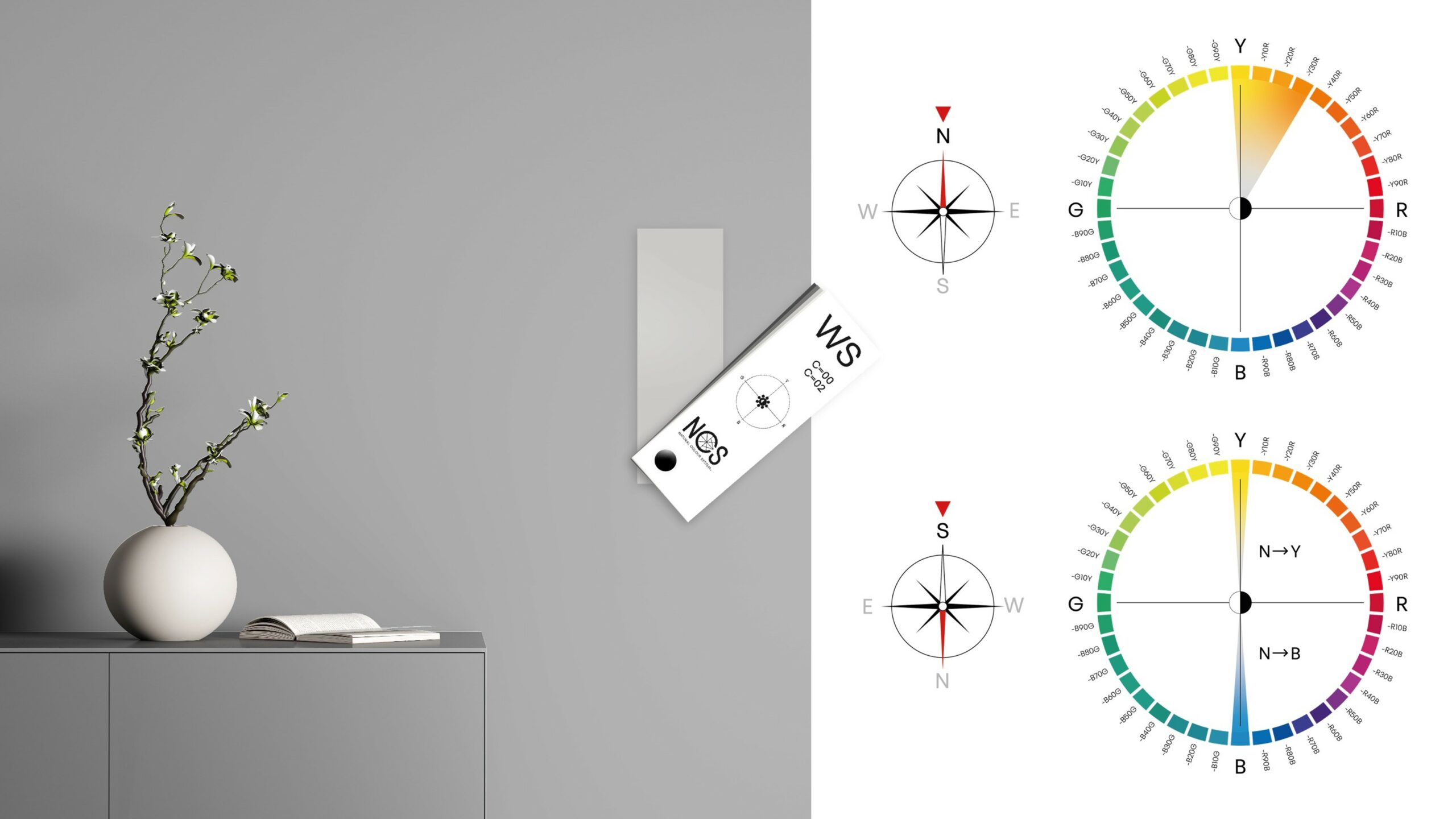Back to Course
19. NCS in kitchen studios II
0% Complete
0/0 Steps
Lesson 2 of 4
In Progress
Interior design principles Part 1
You are currently viewing a placeholder content from Vimeo. To access the actual content, click the button below. Please note that doing so will share data with third-party providers.
More Information Let us take a closer look at the Colour Design Principles in relation to Interior Colour Design.
GENERAL RULE
• General color change in interior colors is that they become more chromatic and darker.
GENERAL RULE
• General color change in interior colors is that they become more chromatic and darker.
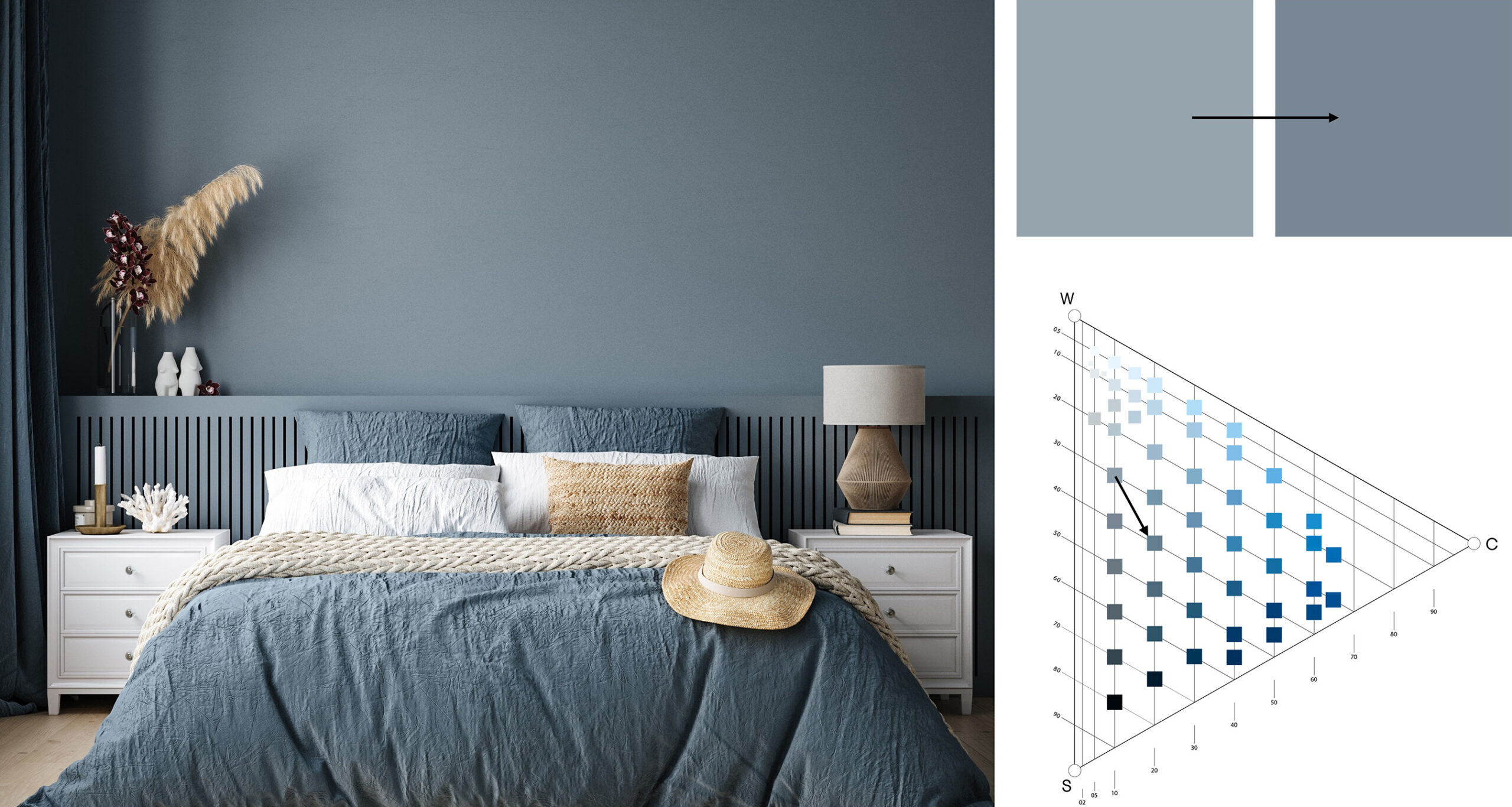
Light
QUESTION 1 – How much light is there?
You need to understand how much light there is in the room to be able to direct your client to the right color. If the room has a lot of light coming in from windows or fixtures, pale colors with less chromaticness might lose their perceived chromaticness. Or if less light is coming in, it will be difficult to perceive differences between dark colors. For example, it will be hard to see the difference between a dark purple and dark blue.
ASK YOUR CLIENT: Do you have big or small windows? Does the room feel bright? Is it close to the ground or higher up in the building?
QUESTION 2 – Which direction do the windows face?
Knowing which direction the windows face could be significant when advising in colors. The reason for that is that the perception of colors changes depending on whether the windows are facing north or south. In general, rooms facing south are perceived to be warmer, and rooms facing north are perceived to be colder. We will be explaining this phenomenon further later in the course.
ASK YOUR CLIENT: Do your windows face north or south?
QUESTION 3 – What light fittings are in the room?
Just as it is important to understand that color is perceived differently depending on window aspects, it is important to understand that light fittings are also a reason for the perceived differences between the small color sample and the color on the wall. If your client only has warm lighting (around 2200K) at home, the colors will be perceived very differently from the store.
ASK YOUR CLIENT: What lighting do you have, warm or cold?
You need to understand how much light there is in the room to be able to direct your client to the right color. If the room has a lot of light coming in from windows or fixtures, pale colors with less chromaticness might lose their perceived chromaticness. Or if less light is coming in, it will be difficult to perceive differences between dark colors. For example, it will be hard to see the difference between a dark purple and dark blue.
ASK YOUR CLIENT: Do you have big or small windows? Does the room feel bright? Is it close to the ground or higher up in the building?
QUESTION 2 – Which direction do the windows face?
Knowing which direction the windows face could be significant when advising in colors. The reason for that is that the perception of colors changes depending on whether the windows are facing north or south. In general, rooms facing south are perceived to be warmer, and rooms facing north are perceived to be colder. We will be explaining this phenomenon further later in the course.
ASK YOUR CLIENT: Do your windows face north or south?
QUESTION 3 – What light fittings are in the room?
Just as it is important to understand that color is perceived differently depending on window aspects, it is important to understand that light fittings are also a reason for the perceived differences between the small color sample and the color on the wall. If your client only has warm lighting (around 2200K) at home, the colors will be perceived very differently from the store.
ASK YOUR CLIENT: What lighting do you have, warm or cold?
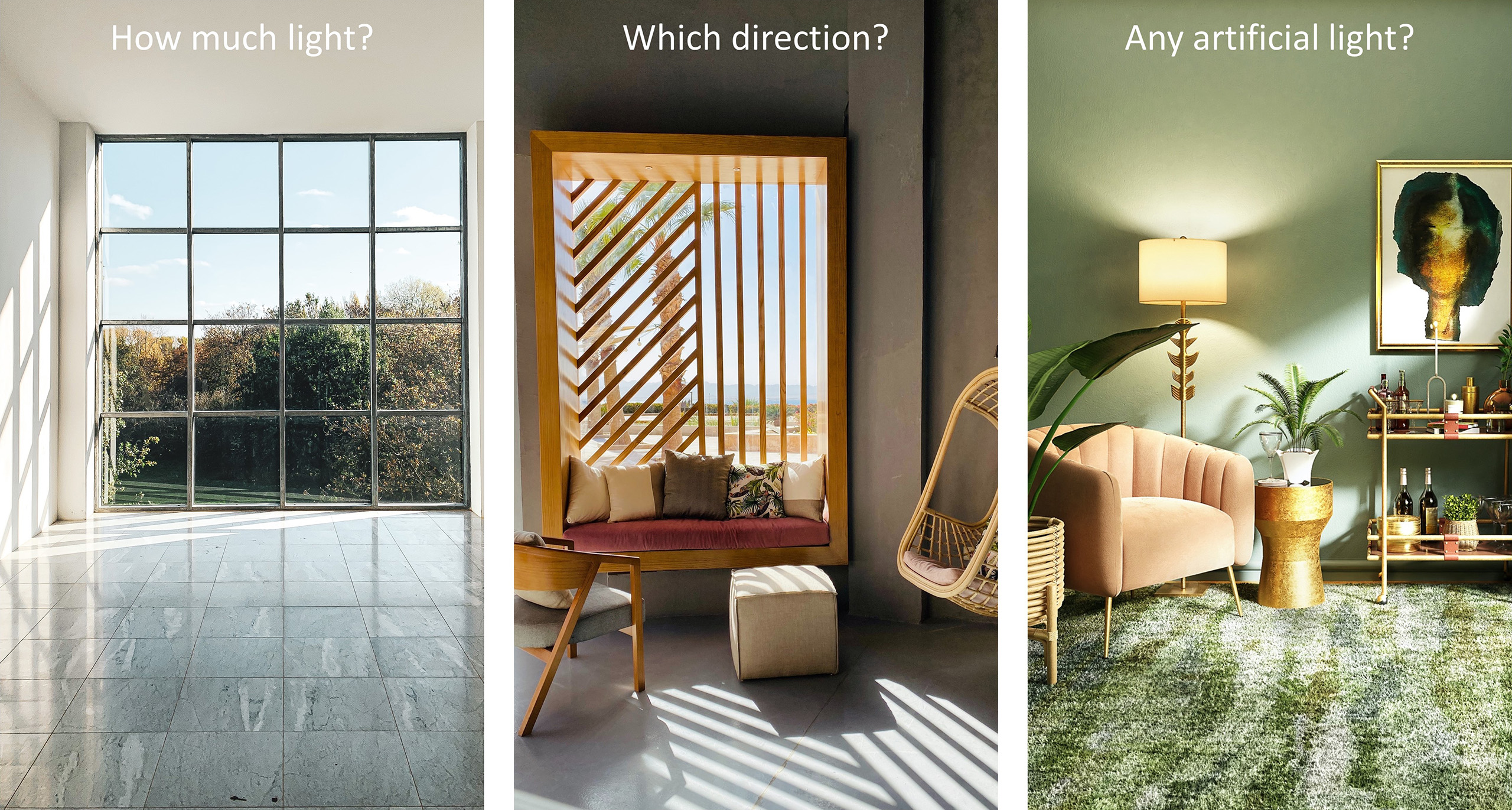
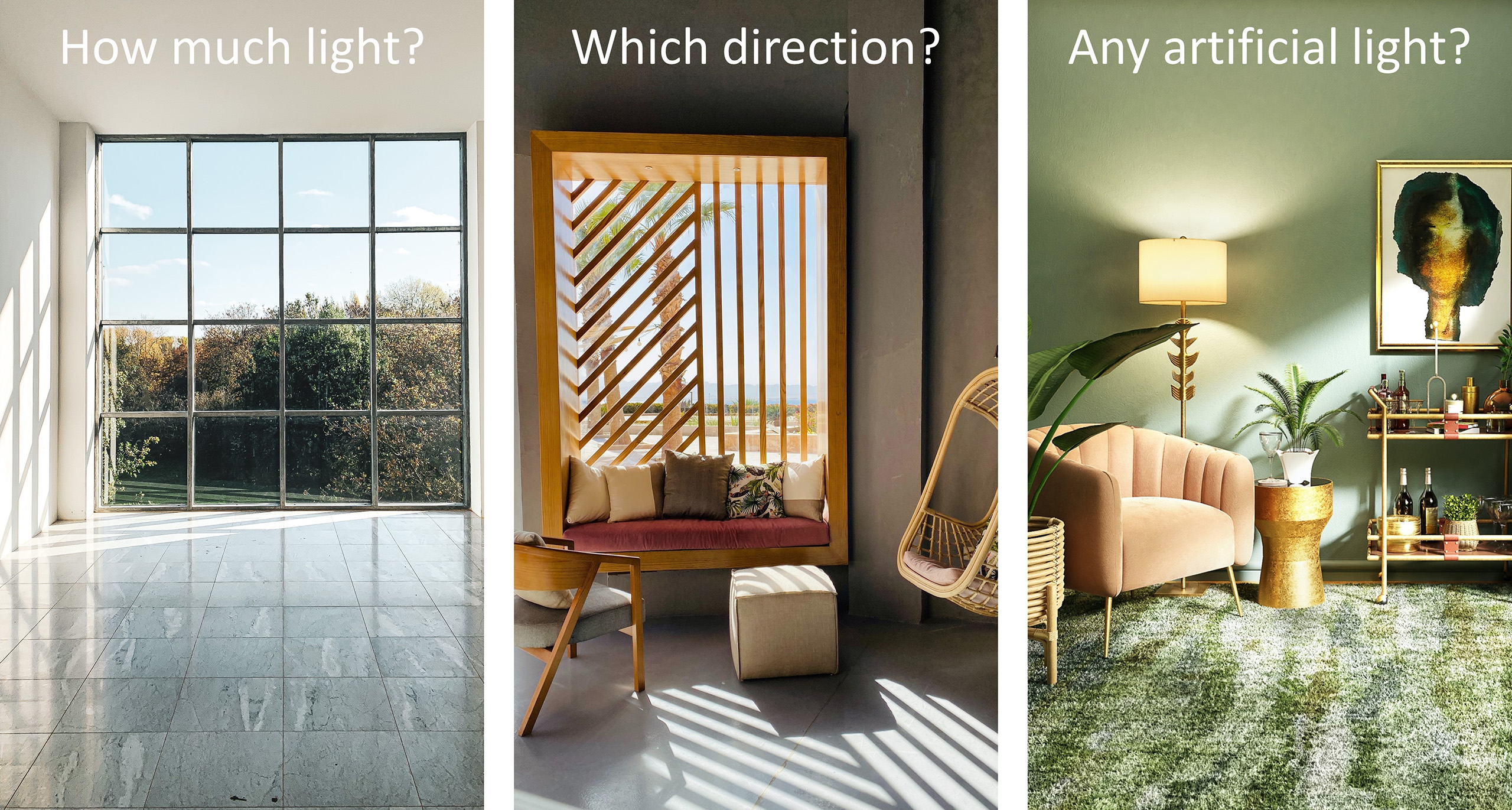
Color change
When your client walks in and asks for a beige or greige color, perhaps you just recommend some colors that you know are trending, or perhaps something that you find beautiful, without taking the light into consideration. But daylight is an important factor when it comes to color. Rooms facing south have direct sunlight while rooms facing north have indirect sunlight, which means that the light that is coming in is blueish but also contains reflections from the surroundings. It could be houses, trees, grass or perhaps sand and rocks. Therefore, the same color will not look the same in south facing rooms as it does in rooms facing north facing.
Knowing there is a change is fundamental and understanding the change and making the correct color recommendation for your client is of the utmost importance.
Below we present how the perception of colors changes in relation to daylight in interior settings. Colors move different depending on if the light is warm or cold and we have arranged an image that presents the general color change in both north and south facing rooms.
YELLOW ROOMS
Yellow rooms with indirect sunlight move away from pure yellow while in direct sunlight it moves towards pure yellow. The difference between indirect and direct yellow rooms is that indirect light takes away the chromaticness while in direct sunlight the chromaticness can become very intense.
Knowing there is a change is fundamental and understanding the change and making the correct color recommendation for your client is of the utmost importance.
Below we present how the perception of colors changes in relation to daylight in interior settings. Colors move different depending on if the light is warm or cold and we have arranged an image that presents the general color change in both north and south facing rooms.
YELLOW ROOMS
Yellow rooms with indirect sunlight move away from pure yellow while in direct sunlight it moves towards pure yellow. The difference between indirect and direct yellow rooms is that indirect light takes away the chromaticness while in direct sunlight the chromaticness can become very intense.
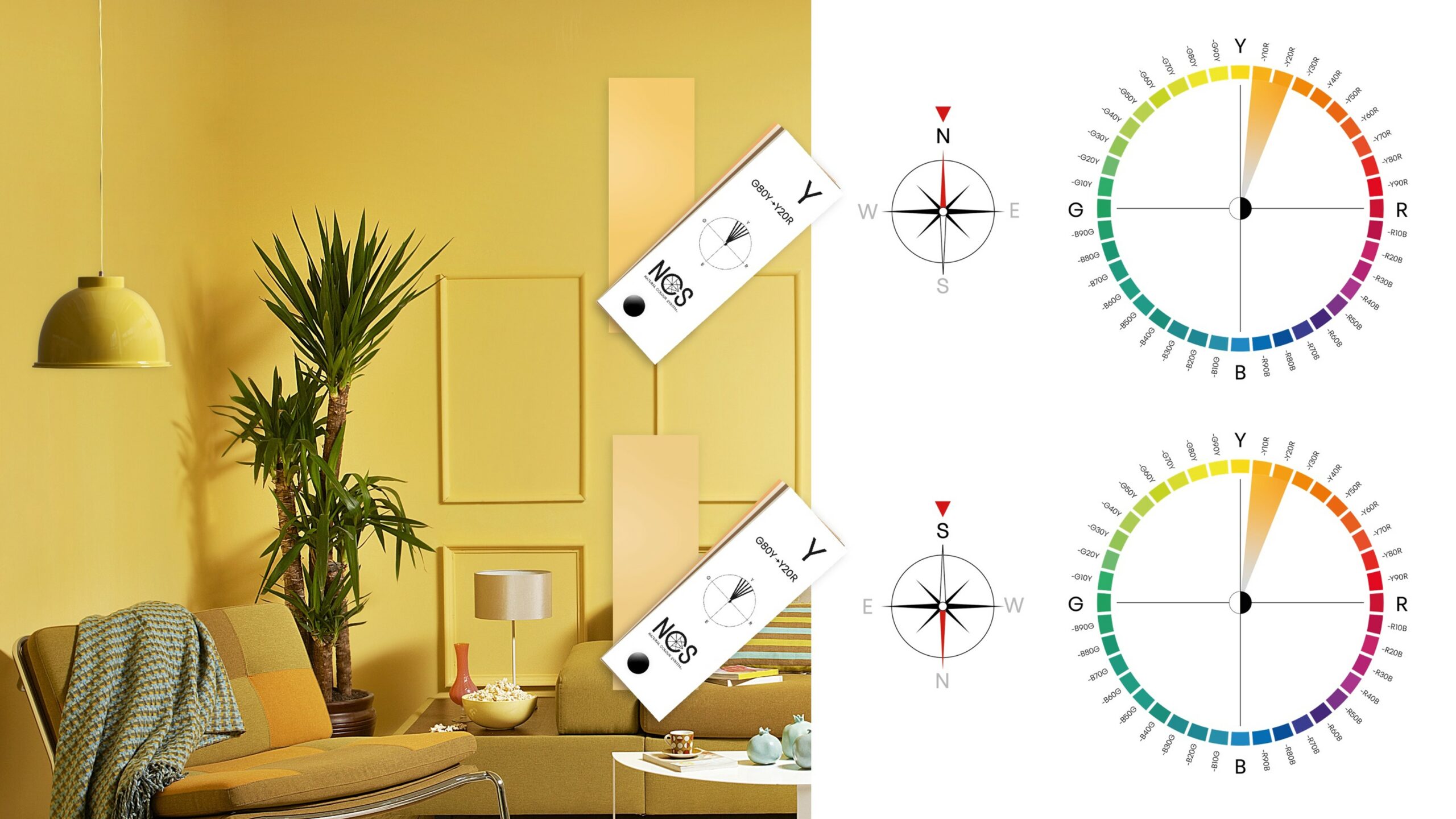
PINK ROOMS
Pink rooms with indirect sunlight easily move towards blueish while pink rooms with direct sunlight either moves towards blueish or yellowish. Yellowish pink colors very close to R will move towards blue while Y80R moves towards yellow instead.
Pink rooms with indirect sunlight easily move towards blueish while pink rooms with direct sunlight either moves towards blueish or yellowish. Yellowish pink colors very close to R will move towards blue while Y80R moves towards yellow instead.
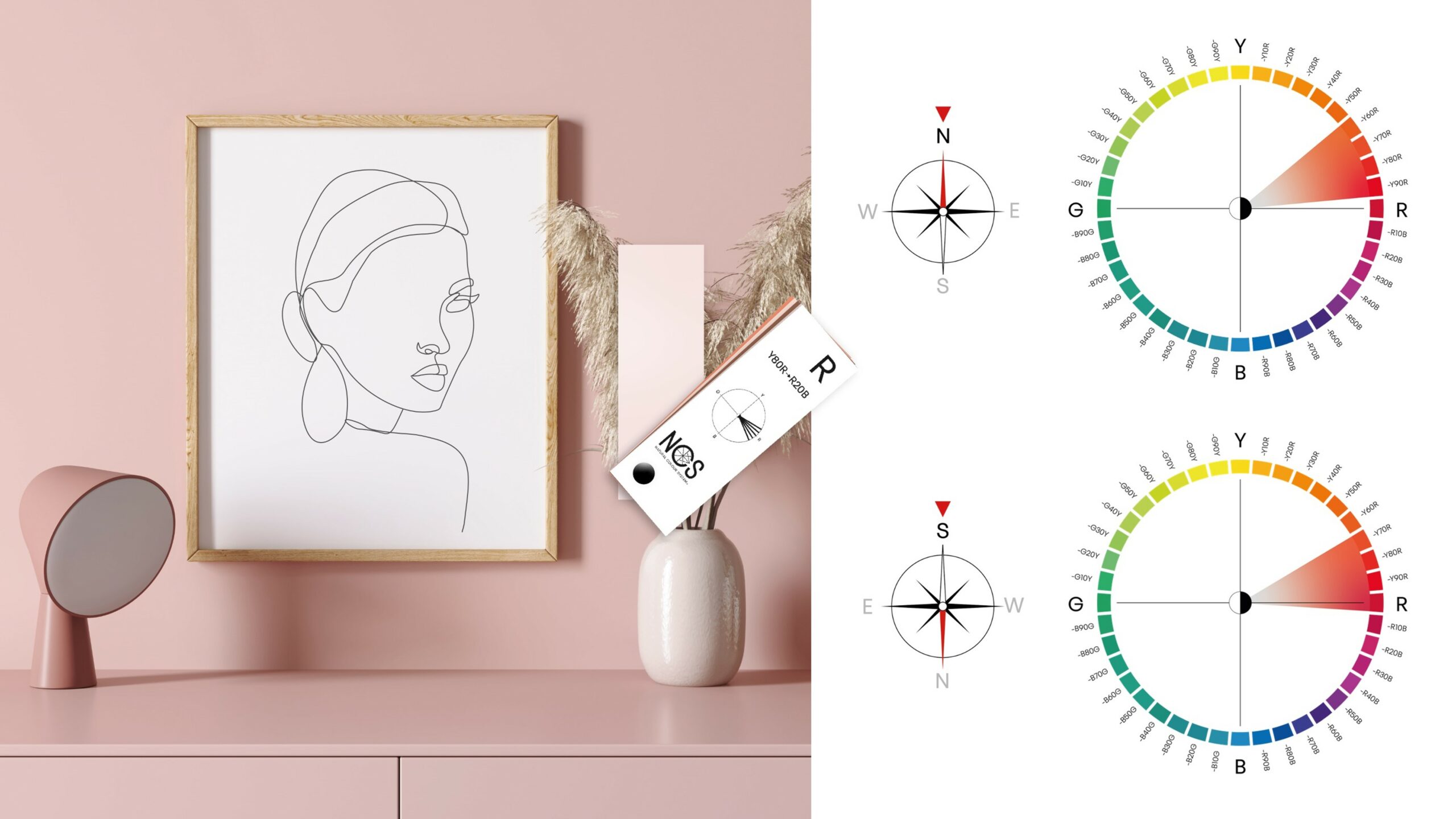
BLUE ROOMS
Just a hint of chromaticness will make a color look blue, especially in rooms with indirect sunlight. Indirect sunlight also pushes the color to move towards red and in direct sunlight the color moves towards green.
Just a hint of chromaticness will make a color look blue, especially in rooms with indirect sunlight. Indirect sunlight also pushes the color to move towards red and in direct sunlight the color moves towards green.
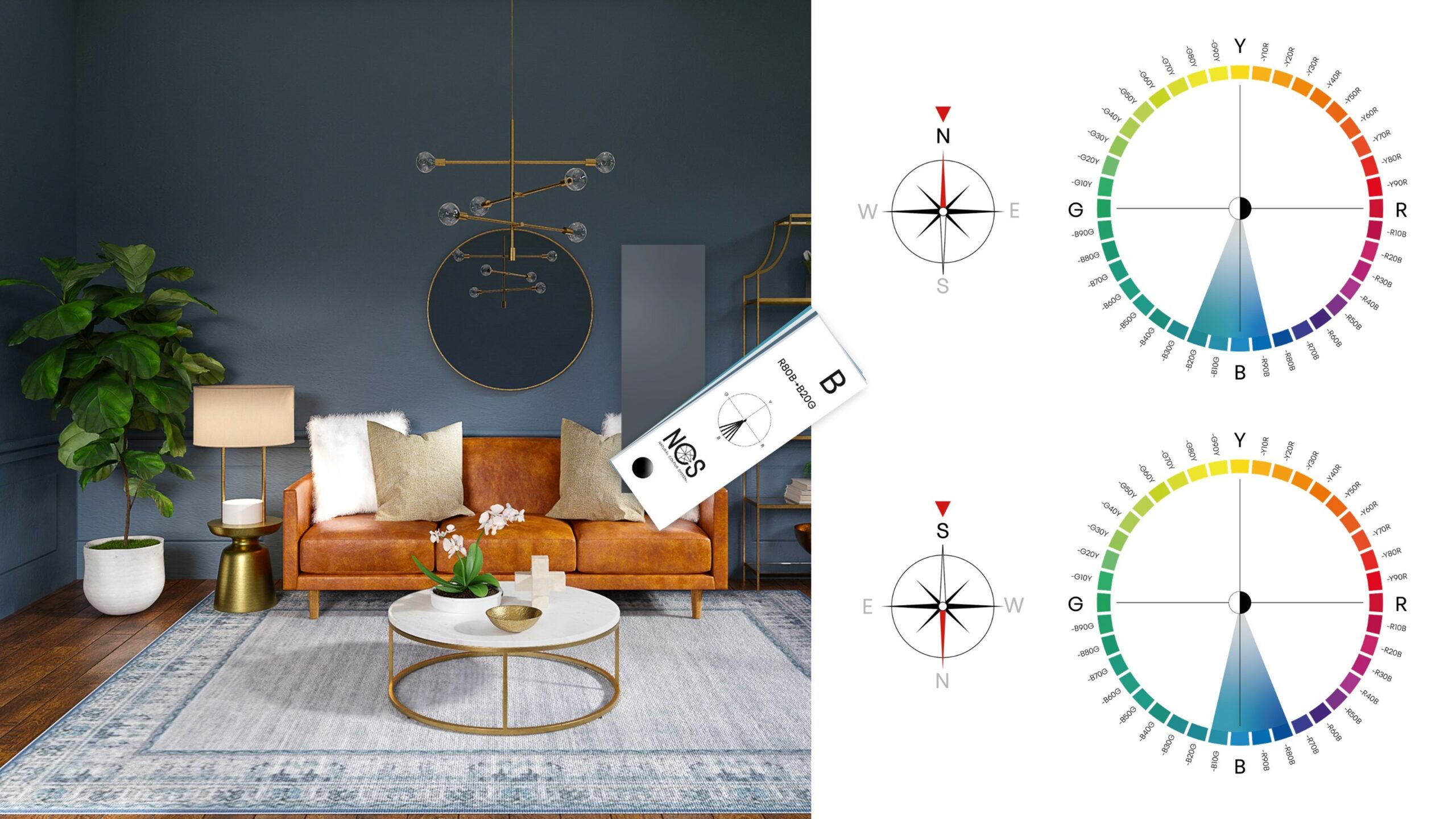
GREEN ROOMS
All rooms within the green area moves towards blue no matter the light, although the indirect sunlight pushes the move more towards blue than direct sunlight.
All rooms within the green area moves towards blue no matter the light, although the indirect sunlight pushes the move more towards blue than direct sunlight.
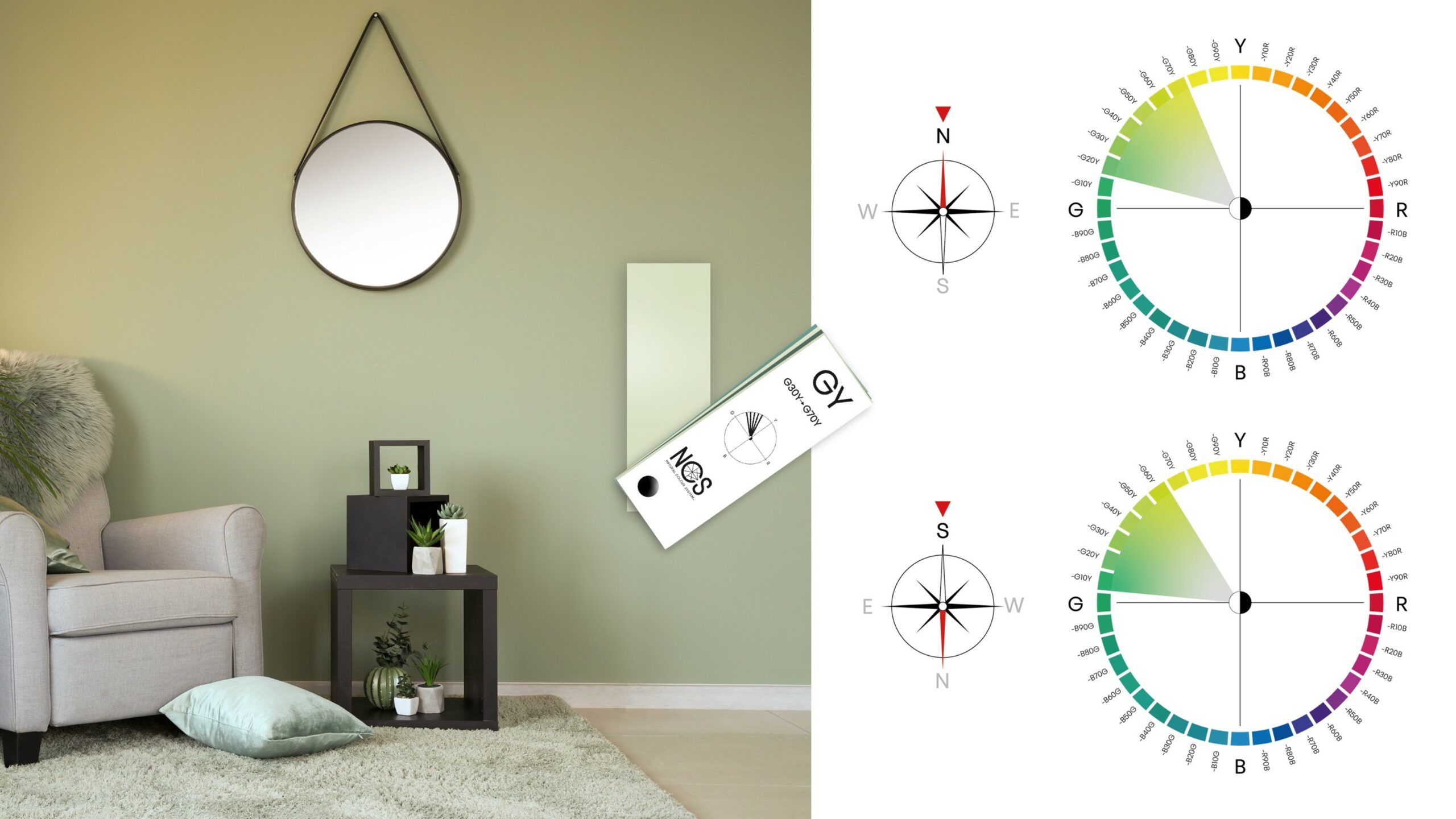
GREY ROOMS
Neutral grey colors easily move towards blueish or purplish especially for rooms with indirect sunlight. To avoid the grey colors looking blue or purple in rooms with indirect sunlight a safe area is to add yellowness to the hue. If you still are looking for a colder grey, add more blackness than 20 % to avoid it from looking purple or green. In rooms with direct sunlight neutral, blueish, and yellowish greys all work.
Neutral grey colors easily move towards blueish or purplish especially for rooms with indirect sunlight. To avoid the grey colors looking blue or purple in rooms with indirect sunlight a safe area is to add yellowness to the hue. If you still are looking for a colder grey, add more blackness than 20 % to avoid it from looking purple or green. In rooms with direct sunlight neutral, blueish, and yellowish greys all work.
